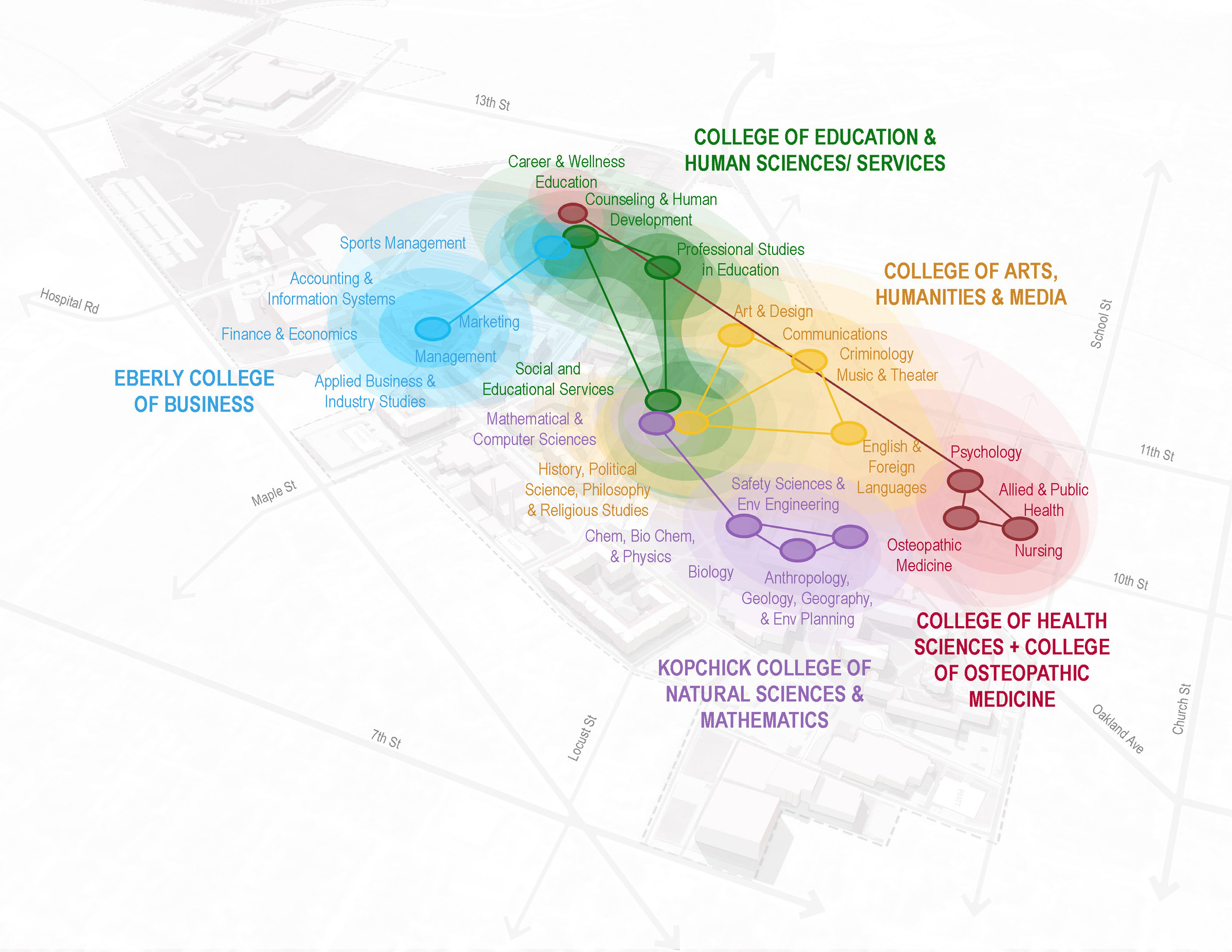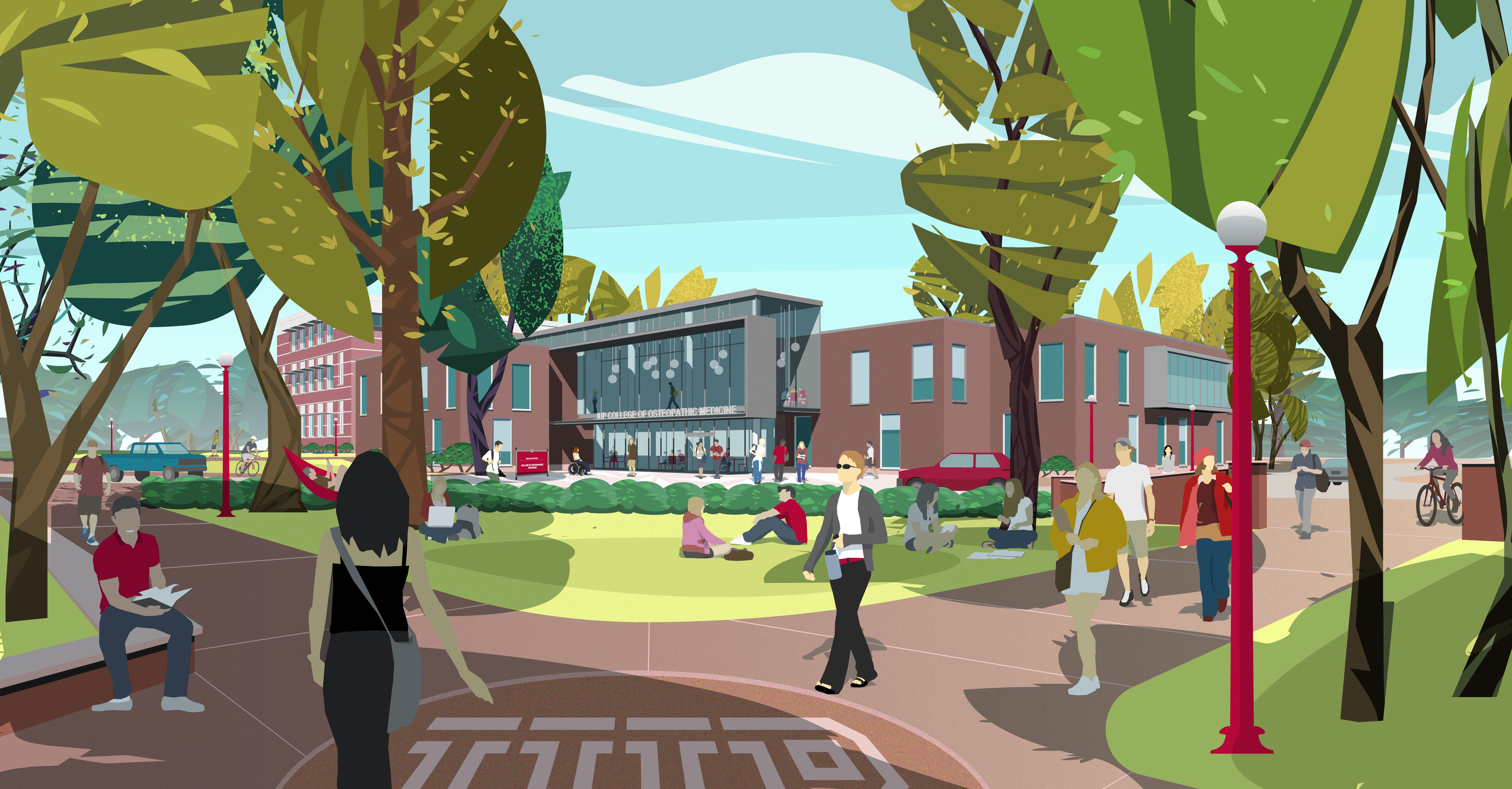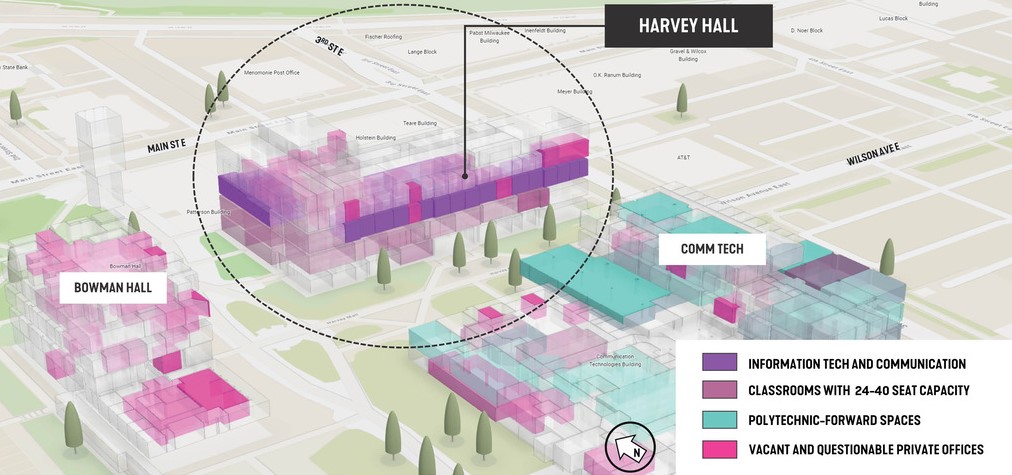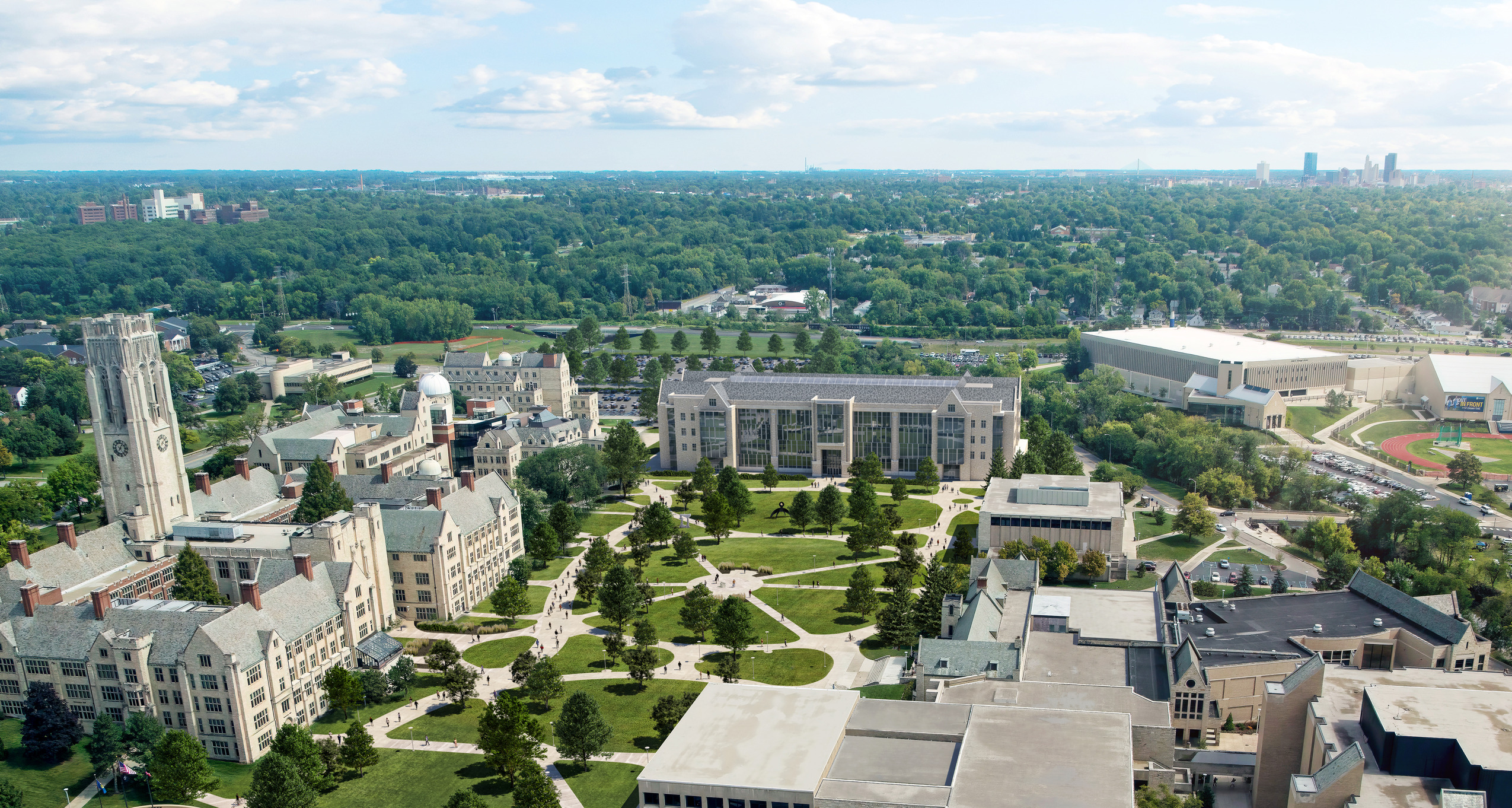Reimagining Higher Education for the Next Generation

Nearly 3,000 public four-year colleges and universities in the U.S. serve over 15 million students, offering transformative experiences and economic opportunities. However, challenges like shifting demographics, declining enrollment and aging facilities are straining the current higher education model. Adapting to these changes is crucial for survival and success, requiring bold and proactive strategies.
Nationally, one could argue there is an excess of “college infrastructure” relative to the population seeking higher education. It seems evident: large institutions are becoming more dominant, specialized ones are thriving and those lacking direction are struggling or disappearing. Something must change. It is time to reconsider some fundamental questions. How many students can, and should we enroll? What programs do we offer, and why? How do we teach, and how do students learn? How much space is truly required to fulfill our mission?
As a result, the conversation around change-agency is based on focus and scale. Many colleges and universities are repositioning to support a new reality: a stronger, smaller, more flexible, and focused programmatic environment. Change begins with bold decision-making. For most public institutions, success hinges on offering competitive programs, right-sizing campus assets and providing a distinct student experience. Bold decisions can involve narrowing academic focus, investing in core strengths and adopting consolidated planning approaches.
1) Narrow the Academic Focus
Originating from normal schools in the mid-20th century, many regional public universities have expanded to offer a wide array of programs. Unfortunately, this additive approach —aiming to be all things to all people—has often been to their detriment. Meanwhile, students are increasingly using fewer, more specific criteria to choose their colleges.
Here lies the paradox: In an era dominated by prestige and rankings, students are prioritizing notoriety and reputation over geographic proximity and programmatic quantity when making their choices. This shift, coupled with regional program duplication, declining enrollments, and facility quality issues, is compelling many public regional institutions to seek a differentiated model. In response, colleges and universities that narrow their offerings and refocus on their core strengths are experiencing renewed success. Achieving this requires a multi-faceted approach, including strategic plans, program prioritization and targeted physical responses.
Through their campus planning process, Indiana University of Pennsylvania seized the opportunity to narrow their academic programs after a decade of enrollment stagnation and decline. Programmatic investments in health sciences will create opportunities to serve an aging and rural population in the state. The provost led academic restructuring that included comprehensive departmental consolidation, a new College of Osteopathic Medicine and focused health sciences cluster. The university restructured administrative leadership to include fewer executive leaders with greater decision-making responsibility. A facility renewal campaign highlighted a half million gross square feet of building removals to reduce deferred maintenance. The plan centralized student services and academic support to better promote student success.


2) Invest in Core Strengths and Innovate
America’s attitudes towards the value of higher education are rapidly changing. The high cost of college attendance, coupled with the emphasis on “employability,” is driving a stronger connection between degrees and the workforce. This reinforces the necessity of a well-rounded learning experience, educating students with cross-disciplinary competencies that combine the breadth of humanities with specific disciplinary depth. This trend highlights the growing emphasis on face-to-face instruction, applied-learning environments, and hands-on experiences. Institutions are focusing on this blend of theory and practice to solve real-world problems, serve society and boost regional economies. This approach is relevant for all institutions preparing students in sectors such as healthcare, business, engineering, design and human sciences sectors.
As Wisconsin’s Polytechnic University, University of Wisconsin-Stout has a tradition of career-focused learning, with laboratories and studios outnumbering traditional classrooms 3:1. To further strengthen their tradition of hands-on learning, the university is strategically repositioning their facilities through space reductions, reorganization of disciplinary clusters and industry-focused laboratory spaces.
The trend is evolving. Institutions are actively reinvesting in their core strengths – teaching students how to think critically, communicate effectively, create knowledge and solve problems. As a result, colleges and universities are renewing their efforts to create experiential learning environments, innovative laboratories, and interdisciplinary collaboration spaces.

3) Adopt Consolidated and Reductive Planning Strategies
U.S. higher education has faced enrollment contraction since the 2010s and is expected to peak with high school graduates in 2025. Since 2020, the National Student Clearinghouse Research Center has recorded a 5% decline in first-year enrollments. Three additional factors are contributing to this shrinking environment: ongoing issues with the Free Application for Federal Student Aid (FAFSA) , the 2023 reversal of affirmative action and a robust job market. Faced with these challenges, many students are opting not to return to college.
We have tough decisions ahead. Adopting a “less is more” attitude is counter-intuitive to U.S. higher education culture, which has seen 250 years of consistent growth. Consolidated and reductive planning strategies may be the right solution for many institutions facing declining enrollment and an excess of physical assets. Aligning strategic programs with space utilization, facility condition and educational adequacy provides a data-informed platform for change. Implementing this approach can lead to a reduced footprint and a more resilient academic chassis.
The University of Toledo is investing in facilities and consolidating programs to maximize resources. The plan aligns institutional goals to consolidate assets, refocus academic and research programs and enhance student life. Beginning in 2016, the university merged three campuses into two, shedding more than 1.3M GSF of surplus facilities, exceeding its goal of a 15% overall space reduction. In response to a comprehensive academic restructuring in 2023, the university merged four colleges into two, refocusing their core STEM-H mission. This innovative approach consolidates the allied health and pharmacy programs to the interprofessional Health Science Campus and revitalizes the main campus, which is now centered on Engineering, Sciences, Arts & Letters, Education, Law, and Business.

Closing Thoughts
Thomas Jefferson believed that “an educated citizenry is vital to our survival as a free people.” The benefits of higher education are clear and impactful – social mobility, innovation, civic engagement, culture, and economic growth. As the landscape of colleges and universities continues to evolve, we have the opportunity and obligation to innovate. Decision-makers recognize that while deeply rooted traditions have served us well, changing populations, demographics and educational paradigms require adaptability. The real threat is statis.
As our institutions strive to meet the diverse needs of students and market forces, a one-size-fits-all approach is no longer a viable option. Reimagining the spatial, programmatic, and physical infrastructure of campuses is not only a functional necessity – it is a strategic imperative for ensuring the continued relevance of higher education. Those who lead with bravery and insight will continue to change the world, one campus at a time.